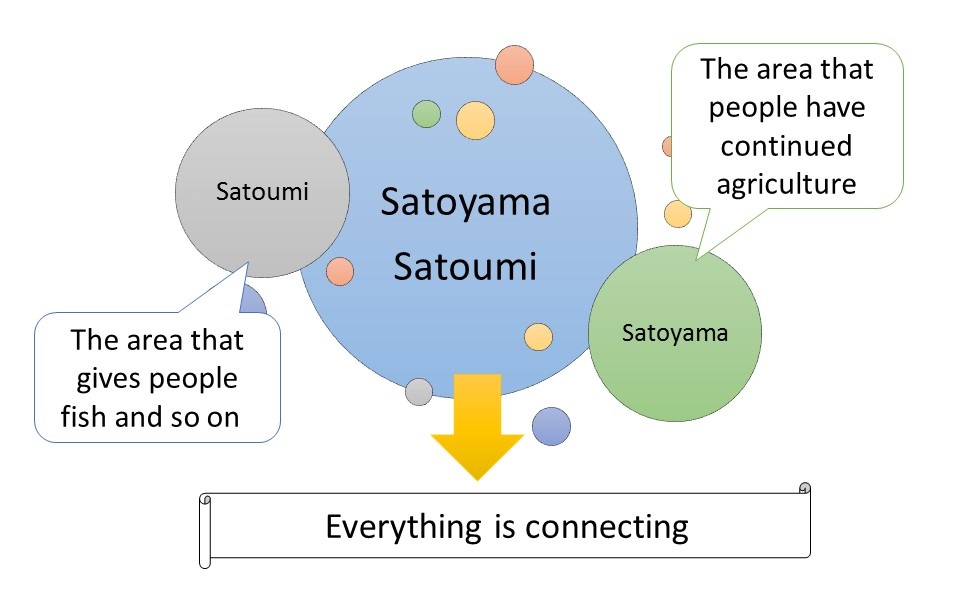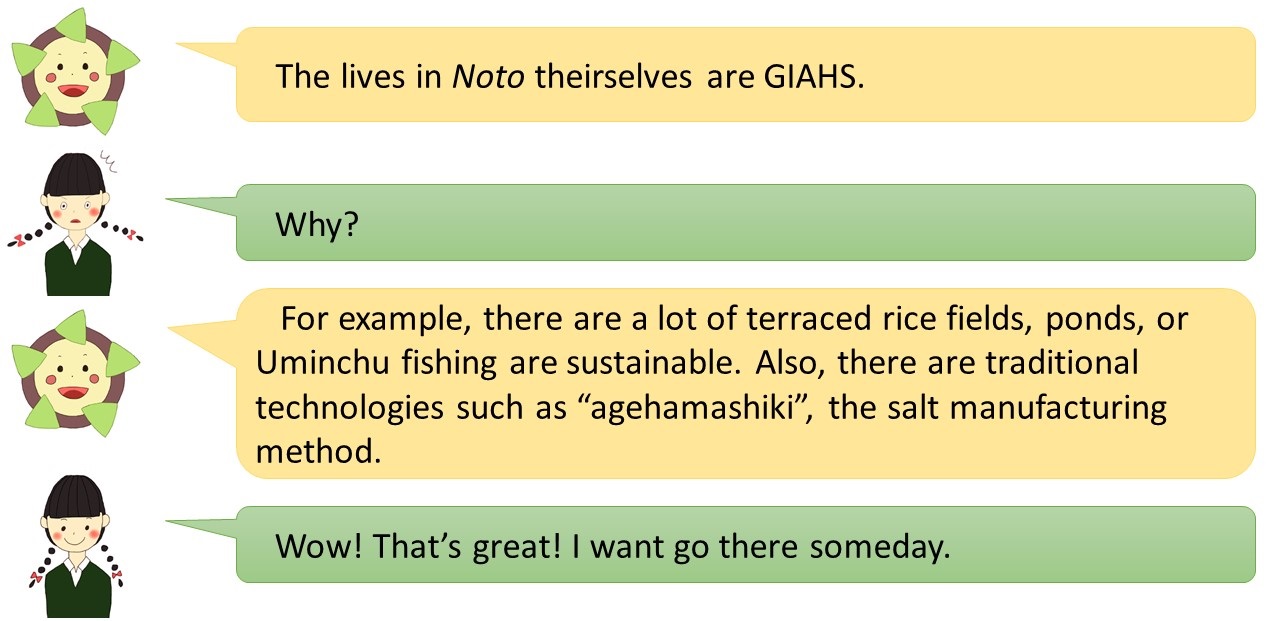Noto
There is no big river or high mountain in Noto. The features of Noto are "Satoyama" (☆)and "Satoumi".(★)Satoyama is an ecosystem on a land and Satoumi is an ecosystem in the coast. Both of them are "secondary natures"(!).
There are systems of agriculture, forestry, and fisheries. They are connected with one after another and have a strong connection with people's livelihood. They also preserve biodiversity.
Shiroyone in Wajima-city is a large terraced rice-field in Kousyu-mountain. Its view changes from season to season and it's really beautiful.
As one of traditional industries, "Agehama-shiki" is famous, which is the method of making salt. "Sumiyaki" preserves Satoyama by "thinning of a forest" (*) or planting trees, fishing by woman divers. "Wajimanuri" is one of the world's intangible cultural heritages.
About a farming village culture, there are "Aenokoto" (**), or "Kiriko Festival" (***).
☆ Satoyama: mountains or forests which are near village and closely connected with people live there. This cannot exist without moderate intervention of human beings.
★ Satoumi: the seaside which can preserve the environment and increase productivity with moderate invention of human beings.
! secondary natures: the environment which can preserve "satoyama" and "satoumi"
* thinning of forest: Cutting down trees to keep moderate distance between the trees.
** Aenokoto: the festival to appreciate crops of a year and wish copious crops next year
*** Kiriko Festival: the festival to carry Kiriko which is the huge lantern
Where is "GIAHS" in Noto?



